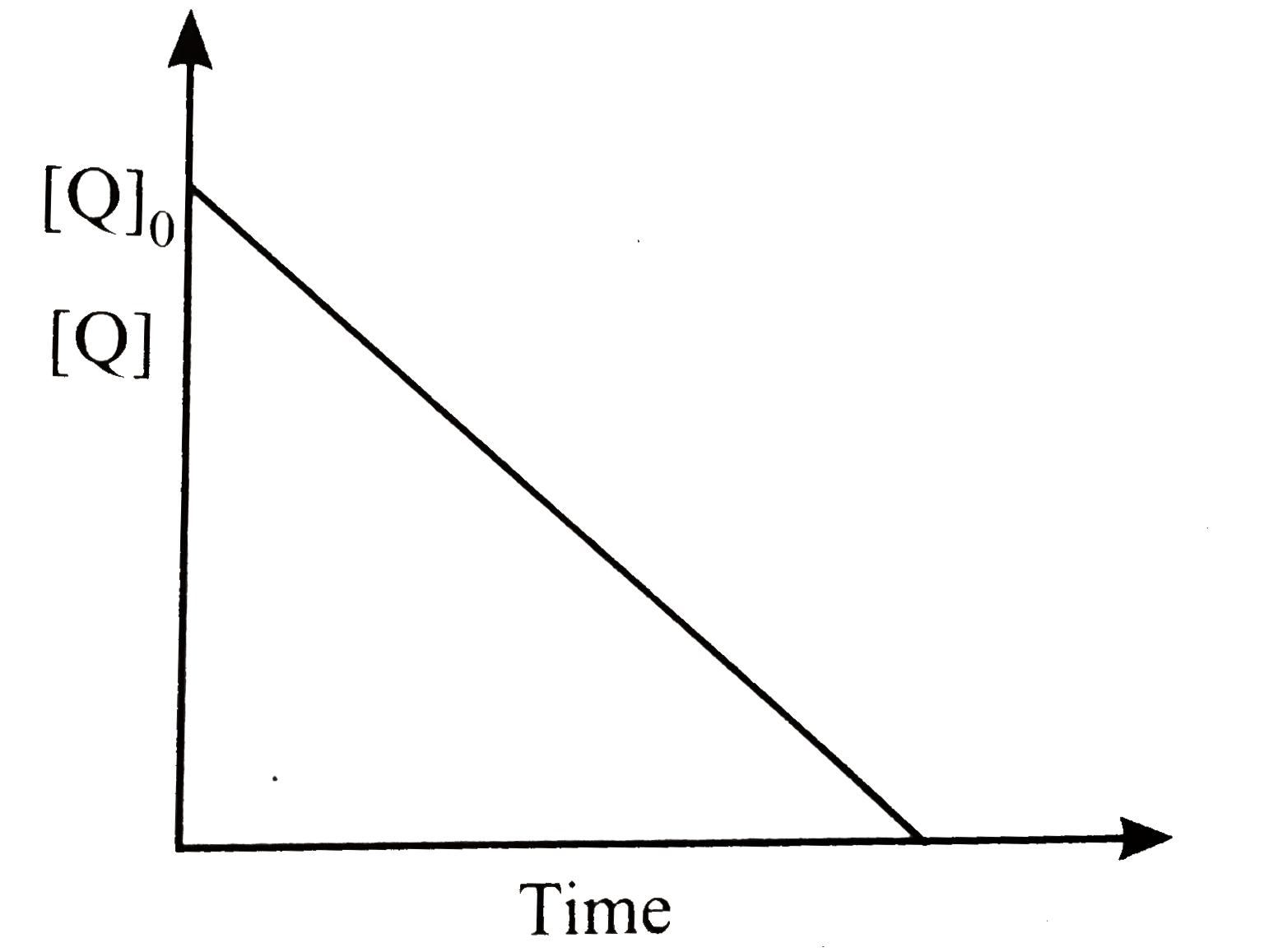Complete Solutions to JEE SECTION (Only one choice correct answer) of chapter CHEMICAL KINETICS of Class 12 book with complete answers and questions
| Class 12 | CHEMISTRY |
| Chapter | CHEMICAL KINETICS |
| ERRORLESS | JEE SECTION (Only one choice correct answer) |
| Number Of Questions | 23 |
| Academic Year | 2023-24 |
The specific rate constant of a first order reaction depends on the
00:43View SolutionThe half life of a first order reaction is 10 minutes. If initial amount is 0.08 mole/litre and concentration at some instant ‘t’ is 0.01 mol/litre, then the value of ‘t’ is :
02:22View SolutionThe rate of a gaseous reaction is given by the expression k [A] [B]. If the volume of the reaction vessel is suddenly reduced to `1//4th` of the initial volume, the reaction rate relating to original rate will be
01:54View SolutionFor the reaction `N_(2)(g) + 2 H_(2) (g) to 2 NH_(3) (g)` under certain conditions of temperature and partial pressure of the reactants , the rate of formation of `NH_(3)` is `0.001 kg h^(-1)` . The rate of conversion of `H_(2)` under the same conditions is
02:26View SolutionThe rate constant, the activation energy and the Arrhenius parameter of a chemical reaction at `25^(@)C` are `3.0 xx 10^(-4) s^(-1), 104 "kJ mol"^(-1)` and `6.0 xx 10^(14)s^(-1)` respectively. The value of the rate constant as `T rarr oo` is
02:48View SolutionFor a first order reaction `A to ` product the rate of reaction at [A] = `0.2 mol l^(-1)` is `1.0 xx 10^(-2) "min"^(-1)` . The half life period for the reaction is
01:35View SolutionThe rate constant for the reaction, `2N_(2)O_(5) rarr 4NO_(2) + O_(2)` is `3.0 xx 10^(-5) s^(-1)`. If the rate is `2.40 xx 10^(-5) mol L^(-1) s^(-1)`, then the initial concentration of `N_(2)O_(5)` (in `mol L^(-1)`) is
01:44View SolutionIf `I` is the intenisty of an absorbed light and `c` is the concentration of `AB` for the photochemical process. `AB+hv rarr AB^(**)`, the rate of formation of `AB^(**)` is directly proportional to
03:02View SolutionConisder the chemical reaction
`N_(2)(g) + 3H_(2)(g) rarr 2NH_(3)(g)`
The rate of this reaction can be expressed in terms of time derivatives of the concentration of `N_(2)(g), H_(2)(g)`, or `NH_(3)(g)`. Identify the correct relationship among the rate expresisons.01:31View SolutionThe reaction `XrarrY` (Product ) follows first order kinetics. In 40 minutes, the concentration of X changes from 0.1M to 0.025 M , then rate of reaction when concentration of X is `0.01`M is :
03:28View SolutionWhich one the following statement for order of reactions is not correct ?
02:54View SolutionConisder a reaction `aG+bH rarr` Products. When concentration of both the reactants `G` and `H` is doubled, the rate increases eight times. However, when the concentration of `G` is doubled, keeping the concentration of `H` fixed, the rate is doubled. The overall order of reaction is
04:47View SolutionUnder the same reaction conditions, the intial concentration of `1.386 mol dm^(-3)` of a substance becomes half in `40 s` and `20 s` theough first order and zero order kinetics, respectively.
The ratio `(k_(1)//k_(0))` of the rate constants for first order `(k_(1))` and zero order `(k_(0))` of the reaction is02:27View SolutionFor a first order reaction `A rarr P`, the temperature `(T)` dependent rate constant `(k)` was found to follow the equation `log k = -2000(1//T) + 6.0`. The pre-exponential factor `A` and the activation energy `E_(a)`, respective, are
01:54View SolutionPlots showing the variation of the rate constant `(k)` with temperature `(T)` are given below. The plot that follows the Arrhenius equation is
02:32View SolutionThe rate of a reaction doubles when its temperature changes form `300 K` to `310 K`. Activation energy of such a reaction will be:
`(R = 8.314 JK^(-1) mol^(-1) and log 2 = 0.301)`02:46View SolutionIn the reaction, `P+Q rarr R+S`
the time taken for `75%` reaction of `P` is twice the time taken for `50%` reaction of `P`. The concentration of `Q` varies with reaction time as shown in the figure. The overall order of the reaction is
 07:26View Solution
07:26View SolutionFor the elementary reaction `MrarrN`, the rate of disappearance of `M` increases by a factor of `8` upon doubling the concentration of `M`. The order of the reaction will respect to `M` is
02:22View SolutionFor the non-stoichiometre reaction `2 A + B to C + D` , the following kinetic data were obtained in three separate experiments , all at 298 K

The rate law for the formation of C is04:09View SolutionHigher order `(gt3)` reaction are rare due to :
01:25View SolutionDecompsition of `H_(2)O_(2)` follows a frist order reactions. In 50 min the concentrations of `H_(2)O_(2)` decreases from 0.5 to 0.125 M in one such decomposition . When the concentration of `H_(2)O_(2)` reaches 0.05 M, the rate of fromation of `O_(2)` will be
03:37View SolutionTwo reactions `R_(2) and R_(2)` have identical pre - exponential factors. Activations enery of `R_(1)` exceeds that of `R_(2)` by 10 kJ `mol_(-1)` . If `k_(1) and k_(2)` are rate constants for rate constants for reactions `R_(1) and R_(2)`
respectively at 300k , then In `(k_(2)/k_(1))`is equal to `(R=8.314 J mol^(-1)K^(-1))`04:12View SolutionAt `518^(@)C` the rate of decomposition of a sample of gaseous acetaldehyde initially at a pressure of 363 Torr, was `1.00 Torr s^(–1)` when `5%` had reacted and `0.5 Torr s^(–1)` when 33% had reacted. The order of the reaction is
02:36View Solution
JEE SECTION (Only one choice correct answer) questions and complete solutions for chapter CHEMICAL KINETICS of UNIVERSAL BOOK DEPOT 1960 CHEMISTRY (HINGLISH) of Class 12
All Exercises from ERRORLESS Class 12 CHEMISTRY CHEMICAL KINETICS
- Critical Thinking Objective Questions
- JEE (Advanced ) 2018
- JEE SECTION (Comprehension type questions )
- JEE SECTION (Integer type questions)
- JEE SECTION (More than one choice correct answer)
- JEE SECTION (Only one choice correct answer)
- JEE SECTION (Reasoning type questions )
- Ordinary Thinking (Collision theory , Energy of activation and Arrhenius equation )
- Ordinary Thinking (Objective Questions) Rate of a reaction
- Ordinary Thinking (Rate law and Rate constant )
